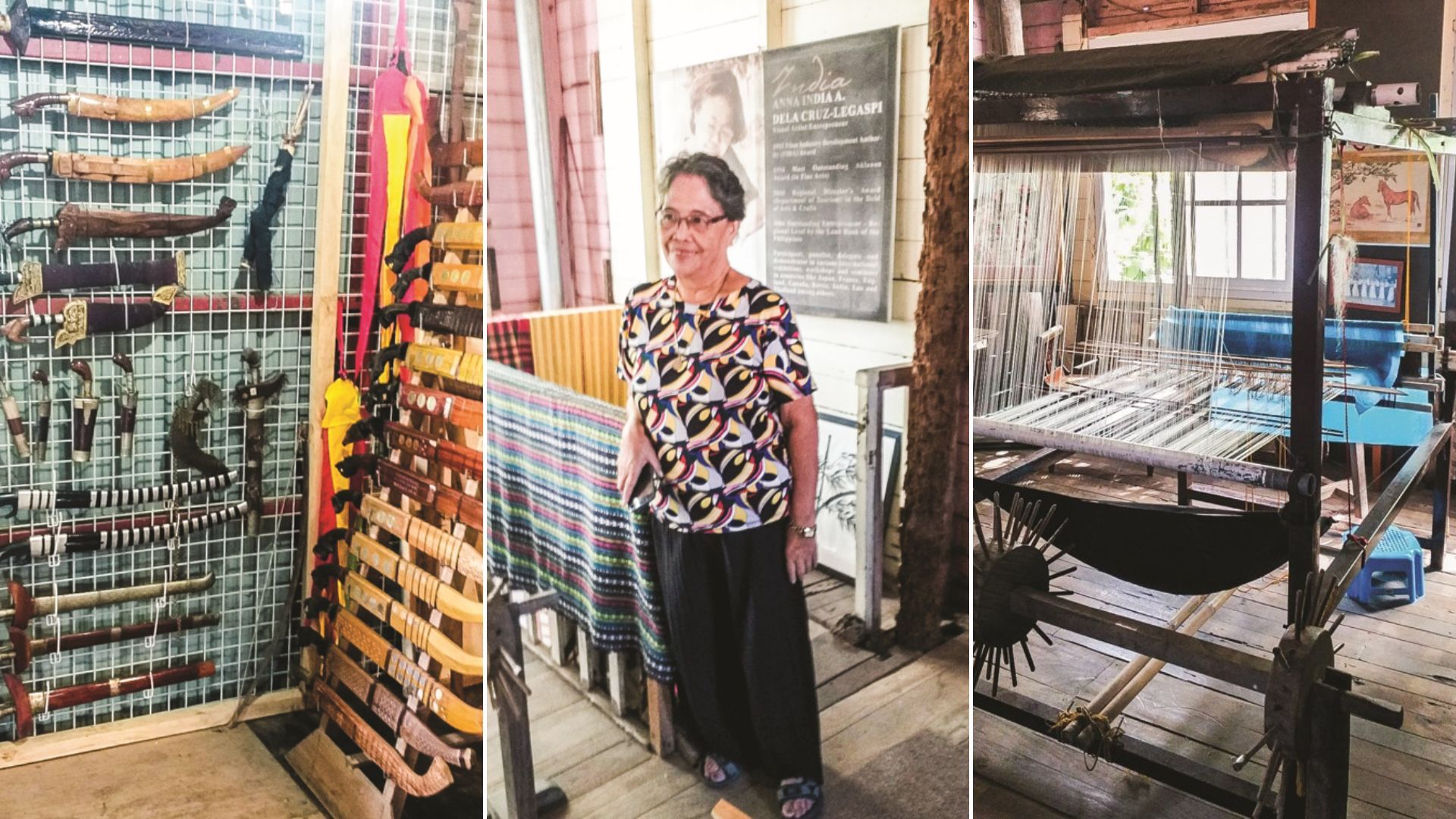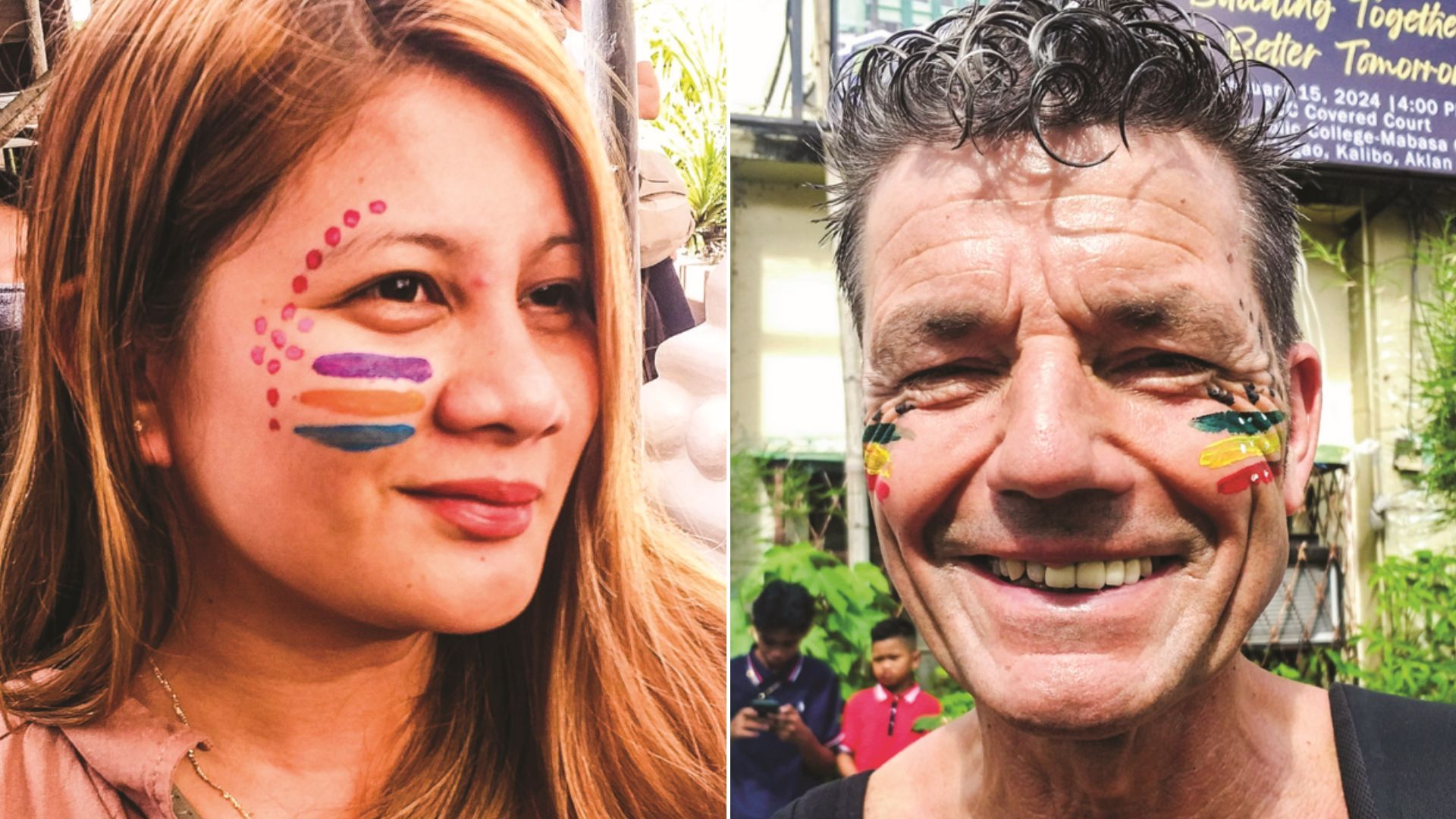Decades ago, my school buddies and I went on a sem break spree to Boracay. There was no electricity then and we camped on the white beach amid topless Europeans. We explored the island on foot and met some Atis somewhere near the mangroves. The Atis are the Negrito ethnic group of the Visayas and the original inhabitants of Boracay and Panay. They now live on the fringes of the island.

The legend
The legend goes that 10 Bornean datus led by Datu Puti arrived in Panay in the 13th century aboard a flotilla of balangays after escaping from an abusive ruler in their homeland. They were met by a certain King Marikudo of the Atis who, at first, was reluctant but later accepted a negotiation wherein they would sell their lowlands to the Borneans in exchange for a golden salakot. Just like the Atis of today, they moved to the hinterlands while the Bornean datus and their families populated Panay and the rest of the country. The story of "Barter of Panay," which has been passed on through oral tradition, is now considered an intangible cultural heritage.
This legendary pact inspired the staging of Ati-atihan which literally means to imitate the Atis. The street parade is known for a way of dancing called "sadsad" which is performed to the tune of loud, rhythmic drums, and shouts of "Hala Bira!" and "Viva Sto. Niño!" One cannot help but to sway and do the sadsad with wild abandon.
Considered the "Mother of Philippine Festivals," Ati-atihan in Kalibo, Aklan has spawned other festivals in other parts of Aklan, Cebu, and Iloilo. What makes the Kalibo Ati-atihan distinctive is that it is participative and non-commercialized. I was told that the earlier celebrations of Ati-atihan were participated by real Atis. Now, the dancers smear their faces and bodies with black soot. Over time, the festival has transformed into something like the Mardi Gras of Rio and New Orleans. The performances are grouped into many categories and there is a prize for best performance and costume.
Religious significance and the Philippine revolution
A religious procession is also held in honor of Sto Niño (Child Jesus), the town's patron. We weren't able to enter the jampacked Kalibo Cathedral so we contented ourselves with "paeapak," which is an Akeanon religious ritual wherein the image of Sto. Niño is kissed by the devotee and rubbed all over his body for healing. Walking around the town plaza, we saw a statue of Gabriel Reyes, the first Filipino archbishop of Manila who hails from Kalibo. Another religious luminary is Cardinal Sin who was born in nearby New Washinton, Aklan.
Aklan also played a role in the Philippine Revolution. The Aklan Freedom Shrine was built to honor the 19 martyrs of Aklan/Capiz who were executed for advancing the cause of the Katipunan. Panay originally represented Visayas in one of the stars in the Philippine flag.

Cultural contributions
On the cultural scene, Aklan is reviving the traditional piña weaving industry. At the forefront of this revival is visual artist and entrepreneur Anna India de la Cruz Legaspi. We visited her at Arte Kalye Sa El Porvenir where you can find weaving looms and several paintings.
India is an Aklanon artist and has been a torchbearer for Aklan's weaving tradition. She is known for developing the piña seda which is a textile blend of pure piña mixed with silk. It is considered an affordable version of pure Liniwan piña fabric.
From the piña weaving house, we went to Maning's Farm to view a unique museum on sword making. It features "talibong," a utilitarian sword used as a weapon and a tool. I had personal interest because the talibong is one of the weapons used in pekiti tersia, a Filipino martial art. Curiously, the talibong museum was curated by Soviet de la Cruz, brother of Anne India. Soviet, just like his sister, is a self-taught artist. He has various paintings in canvas and illustrations. He promotes Akeanon culture by documenting living traditions.
Kalibo is known not only for its merry making and street dancing during Ati-atihan but also for the delicate piña weaving and talibong sword making. So the next time you go to Boracay, book yourself a return flight to Manila via Kalibo.